Related Research Articles

The Courier-Mail is an Australian newspaper published in Brisbane. Owned by News Corp Australia, it is published daily from Monday to Saturday in tabloid format. Its editorial offices are located at Bowen Hills, in Brisbane's inner northern suburbs, and it is printed at Yandina on the Sunshine Coast. It is available for purchase both online and in paper form throughout Queensland and most regions of Northern New South Wales.
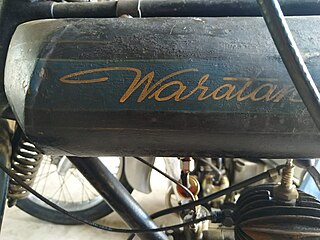
Waratah motorcycles were manufactured in Sydney, Australia, from before 1911 to around 1948, although Waratah badged motorcycles were sold into the 1950s.
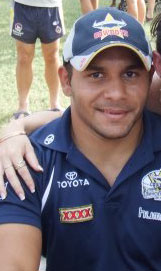
Matthew Jeremy Bowen is an Australian former professional rugby league footballer who played in the 2000s and 2010s. An Australia international and Queensland State of Origin representative fullback, he played in the National Rugby League (NRL) for Australian club, the North Queensland Cowboys, with whom he set the club's record for most matches, and in the Super League for English club, the Wigan Warriors. Bowen was the NRL's top try-scorer in the 2005 and 2007 seasons. Former Queensland and Australian captain Darren Lockyer has called Bowen a "little freak", citing his skills and dynamism. Two-time premiership winning coach Phil Gould remarked in 2005 that he was a "modern-day icon of the game", saying that "Bowen has unique football instincts. He performs the difficult with ease and some of his feats have redefined what we once believed to be impossible."

Cinesound Productions Pty Ltd was an Australian feature film production company. Established in June 1931, Cinesound developed out of a group of companies centred on Greater Union Theatres that covered all facets of the film process, from production to distribution and exhibition. Cinesound Productions established a film studio as a subsidiary of Greater Union Theatres Pty Ltd based on the Hollywood model. The first production was On Our Selection (1932), which was an enormous financial success.

Bermagui is a town on the south coast of New South Wales, Australia, in the Bega Valley Shire. It lies on the shores of the southern end of Horseshoe Bay. The name is derived from the Dyirringanj word, permageua, possibly meaning "canoe with paddles".
Ron Josiah Taylor, AM was a prominent Australian shark expert, as is his widow, Valerie Taylor. They were credited with being pioneers in several areas, including being the first people to film great white sharks without the protection of a cage. Their expertise has been called upon for films such as Jaws, Orca and Sky Pirates.

No. 101 Flight RAAF was a Royal Australian Air Force fleet co-operation flight equipped with amphibian aircraft. The flight was formed on 1 July 1925, and operated from the Royal Australian Navy seaplane tender HMAS Albatross between 1929 and 1933. After Albatross paid off the flight's aircraft operated from the RAN's heavy cruisers HMAS Australia and HMAS Canberra. No. 101 Flight was expanded to form No. 5 Squadron on 20 April 1936.
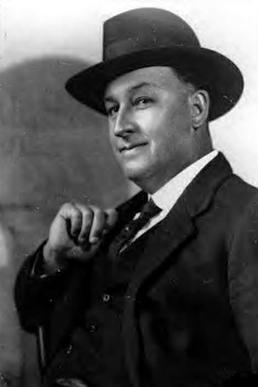
Raymond Longford was a prolific Australian film director, writer, producer, and actor during the silent era. Longford was a major director of the silent film era of the Australian cinema. He formed a production team with Lottie Lyell. His contributions to Australian cinema with his ongoing collaborations with Lyell, including The Sentimental Bloke (1919) and The Blue Mountains Mystery (1921), prompted the Australian Film Institute's AFI Raymond Longford Award, inaugurated in 1968, to be named in his honour.
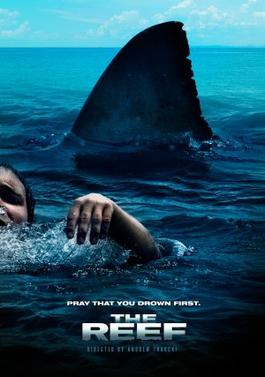
The Reef is a 2010 Australian survival horror film, written, directed and produced by Andrew Traucki in his second feature film. The film is about a group of friends who capsize while sailing to Indonesia and are stalked by a great white shark as they try to swim to a nearby island.

A series of floods hit Queensland, Australia, beginning in November 2010. The floods forced the evacuation of thousands of people from towns and cities. At least 90 towns and over 200,000 people were affected. Damage initially was estimated at A$1 billion before it was raised to $2.38 billion. The estimated reduction in Australia's GDP is about A$30 billion. As of March 2012, there were 33 deaths attributed to the floods, with a further three people still missing.

Rangle River is a 1936 Australian Western film directed by Clarence G. Badger based on a story by Zane Grey.
Typhoon Treasure is a 1938 Australian adventure film directed by Noel Monkman and starring Campbell Copelin, Gwen Munro, and Joe Valli. It is set in New Guinea although shot on the Great Barrier Reef and the Queensland coast. It was Monkman's first dramatic feature film after several years making documentaries.
The Queensland PGA Championship is a golf tournament on the PGA Tour of Australasia. The tournament is currently held at Nudgee Golf Club in Nudgee.
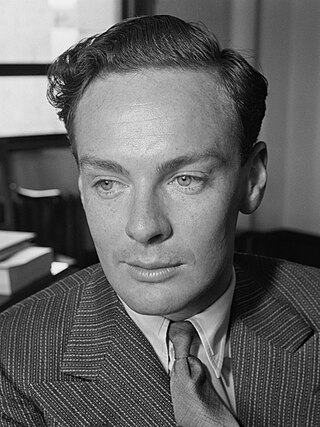
John Wood was an Australian who acted on the stage and briefly became a film star in Hollywood and Britain in the late 1930s.

Severe Tropical Cyclone Joy struck Australia in late 1990, causing the third highest floods on record in Rockhampton, Queensland. This cyclone began as a weak tropical low near the Solomon Islands, and initially moved westward. On 18 December, it was named Joy, becoming the 2nd named storm of the 1990–91 Australian region cyclone season. After turning southwest, Joy developed a well-defined eye and strengthened to maximum sustained winds of 165 km/h (103 mph) while approaching Cairns in Far North Queensland. Brushing the city with strong winds, the cyclone soon weakened and turned southeast. Joy later curved back southwest, making landfall near Townsville, Queensland on 26 December. It dissipated the next day; remnant moisture continued as torrential rainfall over Queensland for two weeks.
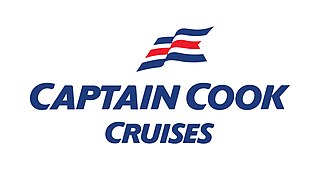
Captain Cook Cruises is an Australian cruise operator. As of January 2018, the company operated 21 vessels on Sydney Harbour, providing a range of Government contracted and non-contracted Ferry services, Sightseeing, Dining and Charter Cruises.

Raymond Stephen Henry Revell (9 March 1911 – 18 November 1968) is recognized as one of Australia's most respected speedcar (midget) drivers. He was an inaugural inductee into the Australian Speedway Hall of Fame in 2007, and the Australian Motor Sport Hall of Fame in 2016.

Heron Island Research Station is a marine research station located on Heron Island, an island within the Great Barrier Reef Marine Park, 80 km from Gladstone, off the coast of Queensland, Australia. It is located at the leeward end of a coral cay on a 10 x 5 kilometre platform reef. Although the island had been used as a turtle cannery in the 1920s, after this was abandoned, it was taken over as a resort in the 1930s, by Captain Christian Poulsen. A number of researchers travelled to the island from the 1930s using the resort facilities. The island became a National Park in 1943, and following the end of World War II, saw the first groups of university students from the University of Queensland arrive. Today the island is divided into three sections - the resort, research station and National Park.

Valerie May Taylor AM is an Australian conservationist, photographer, and filmmaker, and an inaugural member of the diving hall of fame. With her husband Ron Taylor, she made documentaries about sharks, and filmed sequences for films including Jaws (1975).
References
- ↑ "AN AUTHOR'S FILM DEBUT". The Sydney Morning Herald . National Library of Australia. 15 September 1936. p. 9 Supplement: Women's Supplement. Retrieved 12 August 2012.
- 1 2 Andrew Pike and Ross Cooper, Australian Film 1900–1977: A Guide to Feature Film Production, Melbourne: Oxford University Press, 1998, 174.
- ↑ "ZANE GREY'S NEW FILM COMPANY." Argus (Melbourne, Vic) 6 May 1936: 8 accessed 27 December 2011
- ↑ "Zane Grey's Best Fishing Camp." The Courier-Mail (Brisbane, Qld) 8 Apr 1936: 14 accessed 27 December 2011
- ↑ "ZANE GREY." The Sydney Morning Herald 6 May 1936: 11 accessed 27 December 2011
- ↑ "MISS N. WARREN." The Sydney Morning Herald 15 May 1936: 8 accessed 27 December 2011
- ↑ "SCHOOLBOY ATHLETIC CHAMPION BECOMES FILM STAR." The Courier-Mail (Brisbane, Qld) 15 May 1936: 21 accessed 27 December 2011
- ↑ "GREY'S BARRIER REEF UNIT LEAVES", Everyones., Sydney: Everyones Ltd, 20 May 1936, nla.obj-561173244, retrieved 29 March 2024– via Trove
- ↑ "SHARES TO BE USED IN FILM." The Advertiser (Adelaide, SA) 2 Jun 1936: 19 accessed 27 December 2011
- ↑ "TREED TO CALM SURF WITH OIL." The Courier-Mail (Brisbane, Qld) 5 Jun 1936: 19 accessed 27 December 2011
- ↑ "PETROL LAMP BURSTS IN FACE." The Courier-Mail (Brisbane, Qld) 29 Jun 1936: 12 accessed 27 December 2011
- ↑ "Zane Grey's Australian Novel May Yet Be Published". The Sunday Herald . Sydney: National Library of Australia. 9 November 1952. p. 11. Retrieved 12 August 2012.
- ↑ "Women's World." The Courier-Mail (Brisbane, Qld) 22 May 1936: 23 accessed 27 December 2011
- ↑ "MR. ZANE GREY." The Sydney Morning Herald 31 Jul 1936: 11 accessed 27 December 2011
- ↑ "OFFERED FILM CONTRACT." Advocate (Burnie, Tas) 17 Aug 1936: 4 accessed 27 December 2011
- ↑ "ZANE GREY." The Sydney Morning Herald 19 Aug 1936: 12 accessed 27 December 2011
- ↑ "ZANE GREY IN SOUTH AUSTRALIA". The Advocate . Burnie, Tas.: National Library of Australia. 10 May 1939. p. 1. Retrieved 12 August 2012.
- ↑ 'White Death' Sydney Morning Herald 9 Nov 1936 p 5 accessed 27 December 2011
- ↑ "BARRIER REEF FILMS". The Sydney Morning Herald . National Library of Australia. 28 August 1936. p. 5. Retrieved 12 August 2012.
- ↑ ""WHITE DEATH" GIRL IN DIVORCE CASE". The Mirror . Perth: National Library of Australia. 27 February 1943. p. 14. Retrieved 12 August 2012.